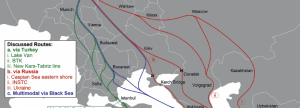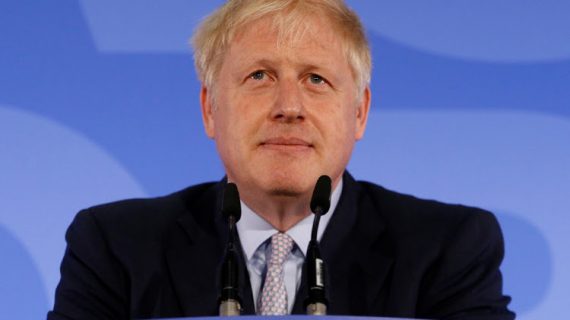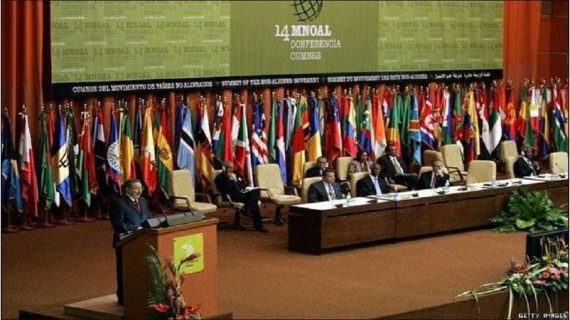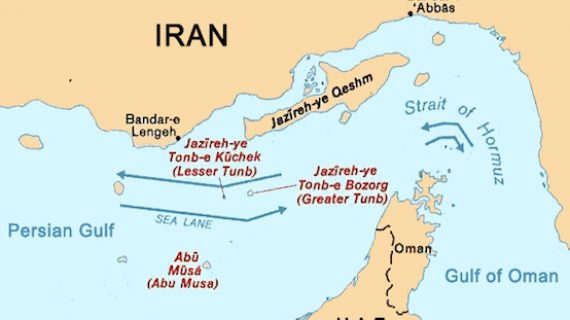Iran-Europe Potential Rail Transport Corridors Surveyed
At present, a train traveling from Western Europe to Iran will take at least 10 days
Reported by HPMM Group according to FINANCIAL TRIBUNE ; Despite Iran’s strategic ambitions, routing for freight trains along its emerging transport corridors still faces a host of infrastructural and political challenges.
Railroad systems are not homogenous along the route and border crossings often come with a break of gauge or other systemic requirements. Politically, the terrain is no less challenging. Contested territories, such as Abkhazia, Nakhchivan and Kurdish territories in Turkey are in the vicinity of Iran’s transport corridors. The railroad routings need to navigate through a region marked by inter-state conflicts. Tensions between Turkey and Armenia, Armenia and Azerbaijan, and between
Ukraine and Russia are some examples, which could have detrimental or even disrupting effects on Iran’s connectivity, reads an article published in the German magazine Railway Technical Review (Eisenbahntechnische Rundschau). Excerpts follow:
At present, a train traveling from Western Europe to Iran will take at least 10 days. While container rates on most Chinese-European trains still receive considerable Chinese subsidies, costs for rail transport via Iran would be more difficult to fund.
The following sections portray and compare potential routings focusing on aspects of efficiency:
- Routes via Turkey
Several railroads and freight train connections are connecting Western Europe to Turkey. Infrastructure has been upgraded recently, e.g. between Dimitrovgrad, Bulgaria and the Turkish border. Nonetheless, on each of the three possible entry routes to Bulgaria, lines are single-tracked and without electrification.
The alignment of many railroads in Turkey is not beneficial for heavy freight transports. The two main East-West transit routes are mountainous and equipped with ramps, not electrified, and mostly single tracked. Various projects will improve this situation on some stretches. There are existing plans to connect Bulgaria via Istanbul with the recently opened BTK Railroad in Kars by high-speed lines until 2023 (partially under construction, partially finished). While the high-speed line from Ankara to Sivas should be ready in 2018, the construction of the Sivas-Erzurum-Kars section has not started yet.
A big issue is the greater Istanbul area: The Marmaray Tunnel is now in operation for four years. The connection to both networks (Asian and European) will be finished by 2018. This first connection of both sides via rail is basically built as commuter/subway line.
It is still unclear if freight trains will receive an allowance for the use of Marmaray Tunnel. In any case, dangerous goods will not be allowed to pass the tunnel and freight traffic will be limited to night times, when there is no commuter traffic. A second railroad will be built in Istanbul connecting the rail networks in the Asian and European part. It will include the new airport and uses the recently opened combined (rail and road) Yavuz Sultan Selim Bridge.
The construction of the railroad has not started yet. There is no decision so far, whether this line can be used for freight trains. The two routes described would be the only connections for freight trains to cross from Europe to Asia on rails without taking a ferry.
Today, rail transport always includes a ferry passage through the Sea of Marmara.
- The Only Route Without Gauge Change: Istanbul-Lake Van-Tabriz (Train Ferry)
This route was used by a weekly passenger train from Ankara to Tehran until it was interrupted in 2015 due to political tensions.
More than 1,800 km separate Istanbul and Tatvan at the western end of Lake Van. From there, a rail ferry carries the train to Van at the eastern end of the Lake. Newly-built ferries are allowed to transport a 500-meter train (four tracks,130 meters in length each) in a single ride and one hour faster than the current ones.
In January 2018, test runs of the first ferry were completed. Still in Turkey, the track heads for the border with Iran at Kapikoy, before reaching Tabriz.
With the opening of the Bostanabad–Mianeh Railroad in 2018, the line to Tehran will be shortened by 114 km. The announced electrification from Tehran to Tabriz will also benefit this route.
- Via Baku-Tbilisi-Kars and Astara
After several delays, the BTK Railroad was put into service by October 2017. First freight trains have been sent along the new track. The BTK is often mentioned as one of the important segments of the “New Silk Road”.
Along the whole stretch, sooner or later, only modern and new railroads will be built. But still the BTK is a detour compared to the direct route. Breaks of gauge in Akhalkalaki and Astara require reloading.
iii. Via a New Line Between Kars and Tabriz
Discussions are underway to build a new standard gauge line in between Kars and Tabriz. Together with the Ankara-Kars high-speed line, this project would finally complete a high capacity standard gauge railroad between Europe and Iran. First Ideas would route this line through Nakhchivan, where already a 1,520-mm stretch exists.
- Routes via Russia
In fact, routes via Russia are the shortest possible ways via rail to Iran. Compared to Turkey as a transit country, the Russian railroads are mostly flat, straight, often electrified and double-tracked. However, at least two transshipments to different cars due to the wider CIS 1,520-mm gauge are required.
- The Only Route Without Leaving Rails Today: Via Kazakhstan and Turkmenistan
With the inauguration of the Uzen-Serhetyaka-Bereket-Etrek-Gorgan in 2014 on the eastern shore of the Caspian Sea, it is possible and affordable to send trains to Iran. The route is longer than the routes via Turkey or Azerbaijan, and two additional countries (Kazakhstan and Turkmenistan) need to be crossed.
- Via Russia and INSTC
The fastest way in near term will be the usage of a combination of well-developed freight corridors in Europe and Asia. The TEN-2 corridor (Berlin-Moscow) together with the China-Europe train development is connected to the INSTC from Moscow to India. The whole length of this line will be further developed and modernized.
With the predicted completion of the last stretch between Astara (Iran) and Qazvin, the line can be seen as a modern freight corridor along the entire path. Shortcuts to the south of Moscow (starting already in Belarus) cut the distance by some hundred kilometers. The line via Briansk and Volgograd is the shortest possible route, without crossing regions with considerable political risks.
iii. The Shortest: Via Ukraine
Even shorter would be a possible routing from Poland all the way through Ukraine to Rostov and further to the Caspian Sea coast. This route is the shortest possible route with just over 5,000 km. Currently, this railroad is threatened by tensions in the Donetsk region.
In future, another short route could possibly cross the Crimean Peninsula via the new Crimea Bridge, which is currently under construction, and then run along the Black Sea Coast (Sochi/Adler) connecting to Georgia via Abkhazia.
- Multimodal Routes via Black Sea
The Black Sea is crisscrossed with railroad ferry connections in both (1,435 mm and 1,520 mm) gauges. However, under efficiency considerations, it does not make much sense to opt for rail ferries, if the Black Sea needs to be crossed. This option would always entail a break of gauge at the European coast, thus raising transport times and costs. A more suitable solution would be the transshipment of containers only.
Currently, transshipment from Bulgaria to Georgia is faster or equal to the route via Turkey. For this reason, some shippers already tested this solution. In Georgian ports of Batumi and Poti, containers can be loaded onto the train.
Still, this option needs an additional transshipment at the Azerbaijan-Iranian border to trucks or, in the future, to a 1,435-mm gauge. Today, it might be more reasonable to use only trucking services between the Black Sea and Iran.
Conclusion
Today, no optimal route solution exists for freight trains from Europe to Iran. Various routings exist, but each has its own characteristic downsides.
If a railroad is the preferred mode of freight transport, it should be routed via Russia today and in the near future. It is the shortest way with the best infrastructure conditions and the remaining gap between Iran and Azerbaijan will be closed soon.
In 2018, new ferries on Lake Van should become operational and cargo trains should be able to use the Marmaray Tunnel. Under the circumstances and if the political situation in Kurdistan allows it, a test train could be sent with European and Turkish wagons from Western Europe to Iran without leaving the 1,435-mm standard gauge.
Under efficiency considerations, the route via BTK Railroad and Azerbaijan currently is not the preferred choice, as it requires too many changes of the modes of transport. However, due to the growing number of railroad projects in and around Iran, several routes are likely to become faster and better suitable for railroad transportations in the near future.







